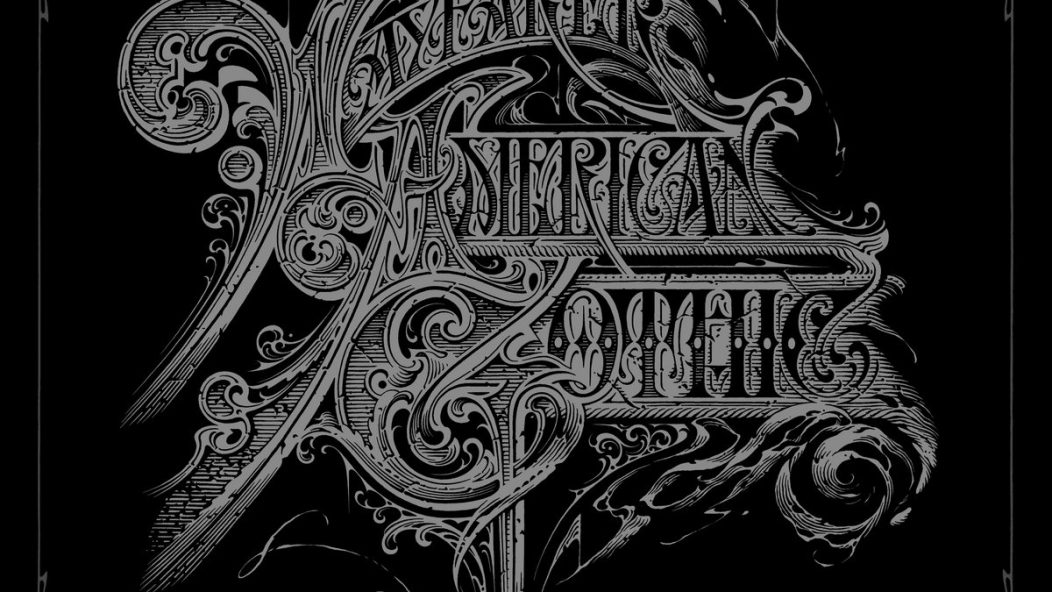
Wayfarer Offer Up a Vicious New Single, Plus Five Favorite Western Books (Early Track Stream)
Coloradan gunslingers Wayfarer are set to drop their latest opus on the world: American Gothic releases via Profound Lore (North America) and Century Media (Europe) on October 27th. Wayfarer’s fifth album sees the extreme metal quartet curate their most ambitious offering yet, entirely immersed in the Wild West provinces they’ve annexed with deeply atmospheric burrs of mournful bottleneck slide, locomotive drums, and jangling guitars that glisten like spurs in the merciless midday sun.
For a tantalizing preview of the imminent frontier-busting fusillade, below you can check out the video for “To Enter My House Justified”, the second single from the forthcoming full-length and one of its most visceral assaults, sounding at times like Wolves In The Throne Room covering Fields of the Nephilim’s Dawnrazor. Commenting on the track, guitarist-vocalist Shane McCarthy says: “It is one of the first pieces we wrote for the new record… It’s aggressive and to the point, telling the story of a desperate search for respite in a world where powers are changing.”
Wayfarer’s world is alive with such wretched tales. To this end, we asked McCarthy for some of the literary legends and blood-soaked histories that impacted upon the making of American Gothic (and not a Louis L’Amour bun fight in sight).
–Spencer Grady
…
…
Bury My Heart at Wounded Knee (1970)
by Dee Brown
“This is the starting point for reading anything about the American West. A transparent and methodical recounting of the history of westward expansion from the Indian perspective. The book is crippling and essential, telling the story of the Navajo, Cheyenne, Sioux, Nez Perce and more – giving accounts of their plight, betrayals, attempted bargains, battles and ultimate tragic ends. In a sensible world, this would serve as a textbook for the early stages of education about American history.”
All The Pretty Horses (1992)
by Cormac McCarthy
“There are several McCarthy books that could have been on this list – but this is a poignant entry point into the recently departed writer’s work. His unique prose style and singular vision of the continent has tonally informed Wayfarer’s own approach to storytelling – his is the realest vision when it comes to depicting a sense of place, and the tone with which he paints his stories has fed directly into how our lyrics are crafted, and how Wayfarer’s music feels and is presented. This is not a world of silver screen heroes and romantic escapes, it is one of blood, betrayal, survival and cold emotion. This also describes the world of American Gothic, and that connection is not coincidental.”
Preacher (nine collected volumes, 1995-2000)
by Garth Ennis & Steve Dillon
“This comic book series is set in Texas, where titular Preacher Jesse Custer is possessed by the spawn of a carnal meeting between angel and demon, and sets off on an odyssey across America searching for a cowardly ‘God’. Ennis clearly has a deep admiration for Western films and legend, and uses this backdrop to paint a scathing attack on organized religion through an off-the-rails ride of blood, sex and madness. Through all of its absurdity and over the top horror bravado, it captures the essence of America and the Western.
A find in my formative years, Preacher served as a bridge back toward the world of Western fiction that I was consistently exposed to as a child. I had been raised with Western films and fiction by my grandparents on both sides of the family, but didn’t really retain this interest until being pulled back by Spaghetti Westerns, and reading Preacher. I am sure these tales of failed gods and Saints of Killers still find their way into the mindset of Wayfarer, even if never referenced intentionally. Oh, and don’t waste your time with the TV series.”
The American West: The Pictorial Epic of a Continent (1955)
by Lucius Beebe & Charles Clegg
“The hefty tome came into my possession early in adult life and has served as a point of fascination and inspiration since. It’s filled with detailed and interpretive illustrations (and occasional photographs) of figures, scenes and events spanning American history from the 1830s to around the turn of the 20th century in the West. There are also brief written accounts covering a range of topics – from plains settlers to mountain terrains, frontier trappers to stagecoach caravans, to Kit Carson and Cattle Kate – but it’s the detailed and often jarringly violent depictions of historical events in the illustrations that are most haunting. History is rarely recounted with such rawness anymore.”
Empire Express (2000)
by David Haward Bain
“This is the history of the construction of the first transcontinental railroad, signaling the escalation of westward expansion in the United States and fully establishing the country as a juggernaut of land, government and aggressive commerce. One of the most important stories ever told in the history of the United States, rife with human ambition, betrayal, subjugation and violence, all perpetrated in the name of manifest destiny.
Our last album, A Romance With Violence (2020), explored these themes heavily, with the railroad cast as harbinger of the violence, greed and domination that rode atop it. The new powers of the nation were wrapping their claws around, never to let go. American Gothic picks up from that point, with the world left to face up to the consequences of this irreversible step in history – the Iron Horse has been ridden, and the dream now lies dead in the wake of its smoke.”
…
American Gothic releases on October 27th via Profound Lore / Century Media.










